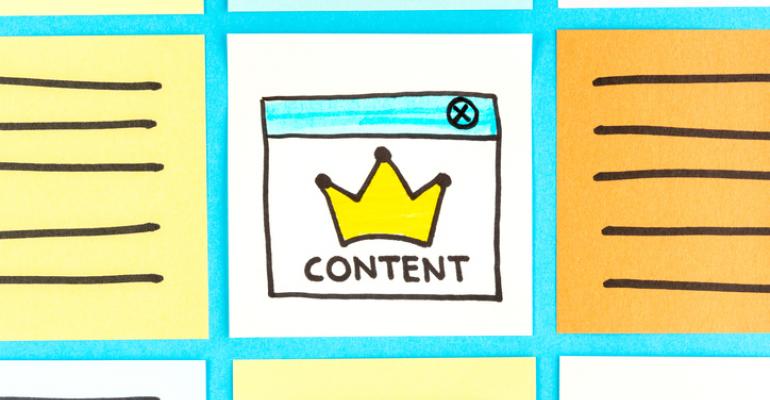Think about what brands do—they provide value by offering education that informs buying decisions consistently over time.
Now think about your event. Do you approach it as simply a moment in time for attendees, or as something with an extended reach that delivers consistent value and stays in the minds of your attendees throughout the year?
“Don’t treat your event like an event,” said Glenn L. Laudenslager, president of Charge Ahead Marketing in Milford, Conn. “Treat your event like it’s a brand.” There are three ways to transition from event thinking to brand thinking, he notes.
1. Create more content. You can repurpose your event content to provide easy entry points for people all year round who can’t make it to the live event. Also, encourage member contributions based on their professional experience. The lessons are endless, so you can ask for submissions even without having to suggest specific topics.
2. Nurture relationships via automation. You can leverage data and behavioral information related to content downloads to make the next series of messaging you send out more relevant and contextual to customers and prospects.
3. Maintain a consistent presence. Don’t let your event website go dark once the event is over. Those who are in the market for education in the weeks and months after your event will skip right off the page when they don’t find any new information that helps them. “Keep your website updated and offer content all year long,” Laudenslager advises.
Why You Need to Provide Content Marketing
Most event hosts spend their entire marketing budget during the six months leading up to the event. “That makes sense, because that’s when most people are making buying and travel decisions,” Laudenslager says. But if you are rebranding your event as a means for year-round education and engagement, you must engage potential attendees with content and deliver value long afterwards. That way, you are developing a pipeline of potential attendees so you don’t have to reintroduce or reinvent your brand every year in the months leading up to the event.
People may come to your website just looking for an answer to a question, not necessarily for a whole conference worth of information, Laudenslager notes. “When your only answer to their question is an event that took place three months ago, what you’re telling them is that it’s all or nothing—they can either register to go to your conference, or they’ll get nothing from you."
The way to deliver value consistently is through content marketing. “All you have to do is repurpose some of the knowledge you already provide through the event and then leverage more knowledge from attendees by asking them to contribute their expertise, and rework your marketing budget to support this year-round coverage,” he says. "Content marketing provides continuity as well as a call to action that turns ‘Do something for us’—register now—into ‘Let us do something for you'—provide you with useful, free downloads.’”
Simple ways you can repurpose information from your conference sessions and speakers as well as attendees include:
• checklists
• whitepapers
• how-to guides
• infographics
• top 10 (or whatever number) lists
• blog posts
• Q&As
• posters
• toolkits
• shareable graphics
You can make this content available for download in exchange for simple, nominal information like the reader’s name and email. “This will give you a list of people you can nurture and upsell to become attendees at your next live event, because they’re interested in the same type of same content as that you provide at the event,” Laudenslager says.
Content Marketing Examples
One example Laudenslager offered was when Massachusetts General Hospital conducted a simple 10-question email survey among area hospitals about recent updates to a mental-health diagnostics manual. MGH used the survey data to create a free whitepaper in just six weeks from start to finish, and got a big response from its target audience. Some 1,200 users—all of whom created free accounts on the Mass General website, complete with all contact information—downloaded it. “They instantly became prospects to upsell into other fee-based education,” he says.
You also can repurpose content you already have in house, which is what Laudenslager did to create the Boston University "SCOPE of Pain" Trainers' Toolkit. They tackled another hot topic—opioid prescribing—not only with a simple survey where the results were crafted into a free whitepaper, but they also used video vignettes and resources that BU already had to create an FAQ section. “The approach won several national marketing awards, but more importantly, the toolkit was downloaded by more than 1,400 chief medical officers, CEOs, and other high-level clinical leaders from across the country,” he says. And the toolkit continued to generate leads a full year and a half after the funds were spent to create it. “This is a textbook case of how content marketing makes your budget work longer and harder than other tactics.”
Work Content Marketing Into Your Budget
How can you fit this into your marketing budget? It’s simpler than you might think. “Just shift a percentage from whichever tactic you are using now that’s least effective. Let’s say that’s direct mail; send a few thousand fewer brochures and use that money to create shareable content," says Laudenslager.
At first, you can produce and promote your content as part of your normal event marketing cycle in the three- to six-month window leading up to your event, Then, after it’s over, use content to drive engagement during the time when you would normally be silent in the market. As you start to see the results and build your list of potential attendees, it will be easier to budget for those content entry points, versus the typical “Register now" messages.





